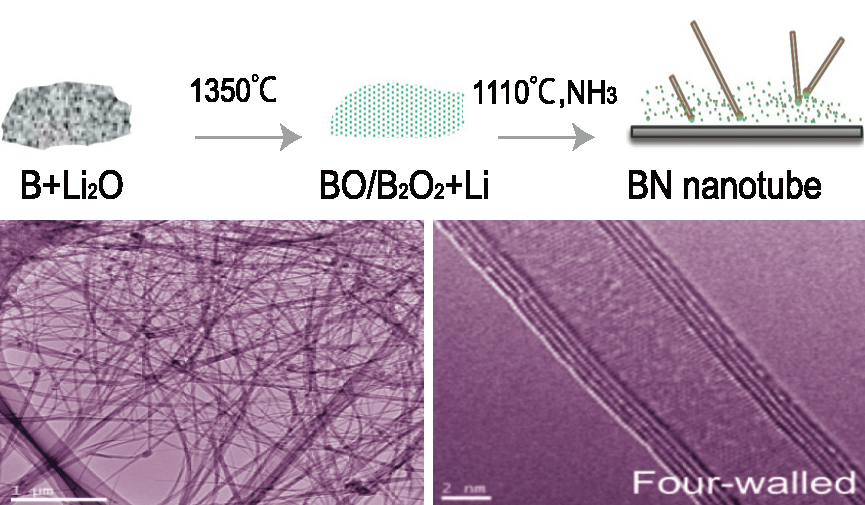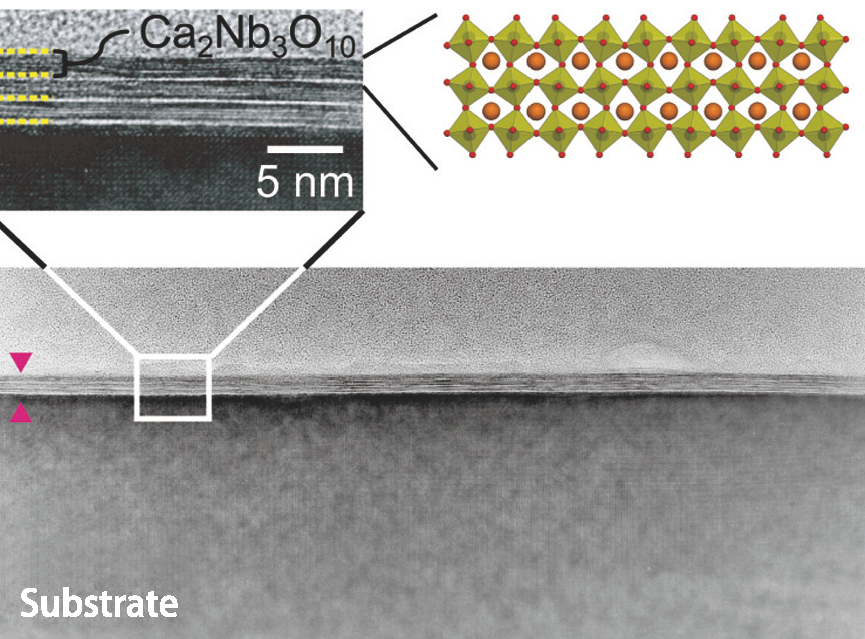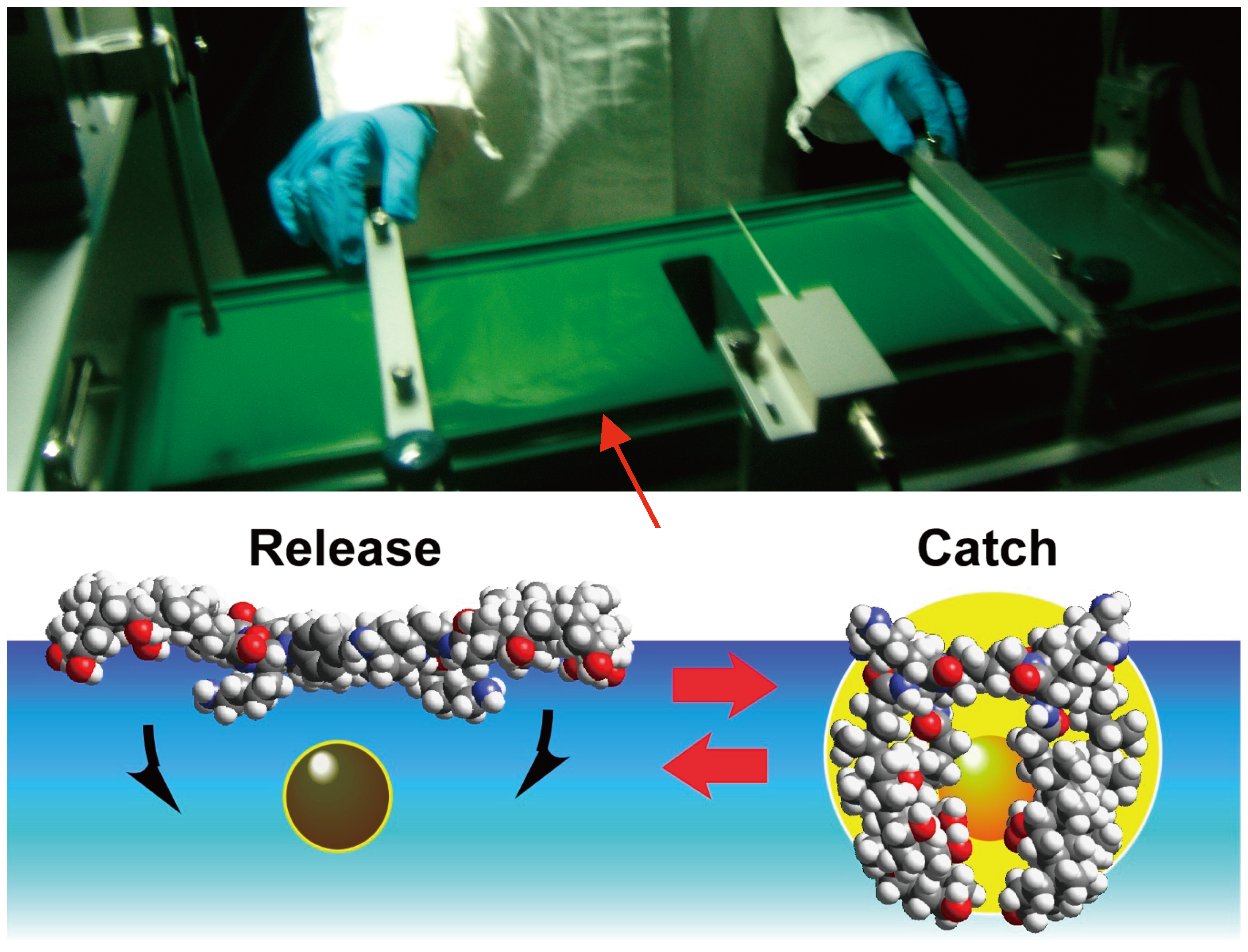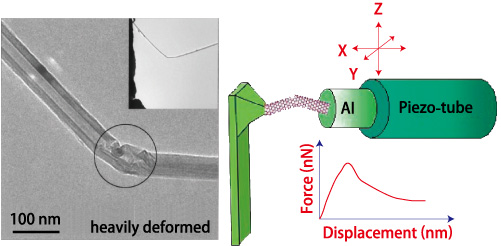Four Research Fields

Designing Nanoscale Materials With New Properties and Unprecedented Functions
MANA is promoting research that explores new properties and functions intricately linked to nanoscale size and shape. This exploration covers a wide range of inorganic, metallic, and organic materials.
The creation of nanoscale materials and the exploration of their applications have almost unlimited potential. Based on the concept of nanoarchitectonics, MANA is developing novel synthesis techniques to bring forth new materials and new processes that will spur innovation across a range of sectors including electronics, environment protection, and energy technology.
Creating functional nanotubes and nanowires
While working on the creation of new types of inorganic nanotubes and nanowires, Diverse synthetic methods such as elemental doping, core-shell structure fabrication, and composite forming are pursued. The combination of these techniques is instrumental in the development of materials with new functionalities. For example, a method for large-scale synthesis of Boron (B) ‒ Carbon (C) ‒ Nitrogen (N) nanotubes and nanosheets of high purity was developed and applied to the creation of polymeric nanocomposite films through nanophase dispersion in a polymer. Good insulation and excellent thermal conduction properties make this type of films a good candidate for use in heat dissipating substrates. Another case in point is high-purity semiconductor nanowires made of inorganic materials such as ZnO, ZnS, and Si/Ge. Doping techniques are explored with a view towards the use of such nanowires for ultraviolet light sensors, solar cells, and other applications.

High-purity synthesis of BN nanotubes (top) and their TEM images (bottom)
Developing functional nanosheet films
Solution-based techniques for layer-by-layer assembly of colloidal oxide nanosheets have been developed and novel functionalities have been designed for highly-organized multilayer or superlattice films of various nanosheets. The illustration below shows a multilayer film of niobium oxide nanosheets (thickness 2nm) with a perovskite-type structure, fabricated by applying the Langmuir-Blodgett method. The obtained film possesses superior dielectric/insulating performance (εr = 210-230, Jc < 10-8 A cm-2 at 1 V), showing promising potential for applications such as capacitors, transistors and so on.

3-layer film of Ca2Nb3O10 nanosheet (cross-sectional TEM image)
Operating a molecular machine by hands
When molecules of a suitable structure are spread on a liquid surface, a supramolecular film with a thickness of only a single molecule (monolayer) can be created. A molecular machine* can be assembled within monolayers. When the film is compressed or expanded by hands, as shown in the illustration below, the molecular machine will take on an opened or closed conformation, and a target object can be captured or released. The principle is applicable not only to the surface of a liquid but also to the surface of various other materials. This could, for example, make it possible to remove toxic or polluting substances or release drugs simply by compressing or expanding a material by hand. There is keen interest in the potential applications with this technology.
*Molecular machine: Molecules that change their structure in response to external stimulation like machine.

Hand-operation (top) and molecular conformation change dependent on pressure (bottom)
Measuring nanoscale material properties
Advanced electron microscope technology is being employed to explore and clarify the atomic structures as well as properties and functionalities of new nanoscale materials. For this purpose, MANA is utilizing special piezo-driven type sample holders having the functions of a scanning tunneling microscope and an atomic force microscope within a transmission electron microscope. These are used to measure the electrical and mechanical properties of nanotubes and nanowires, for example boron nitride nanotubes.

Mechanical properties of a BN nanotube measured inside TEM








